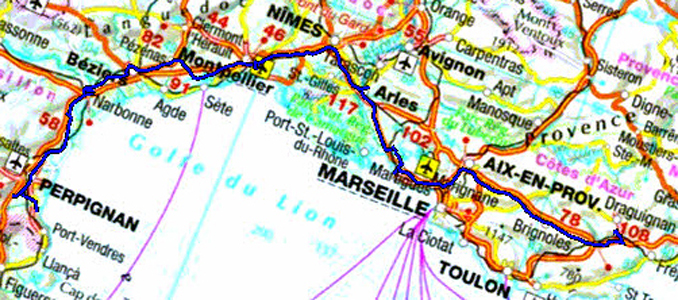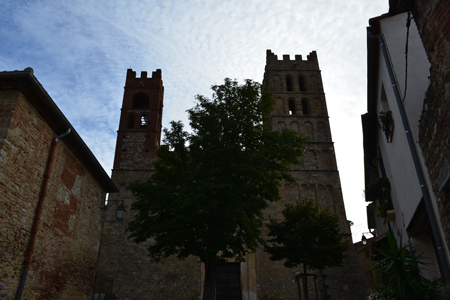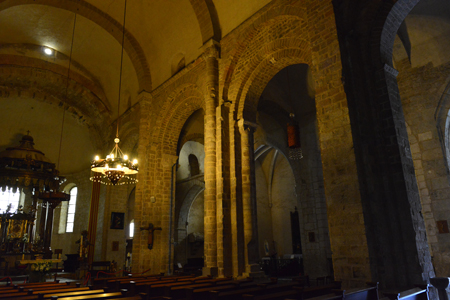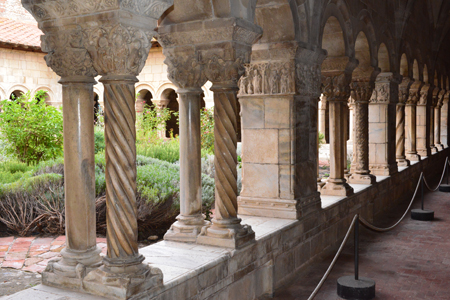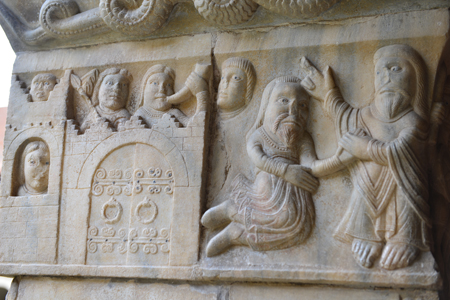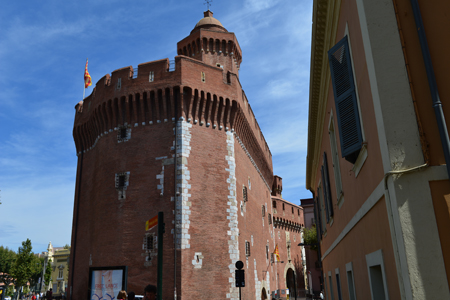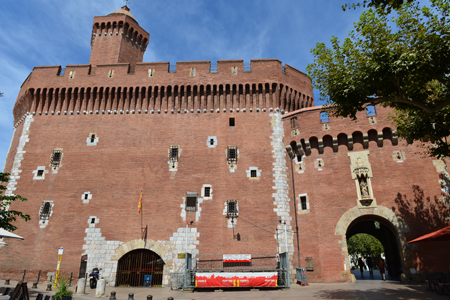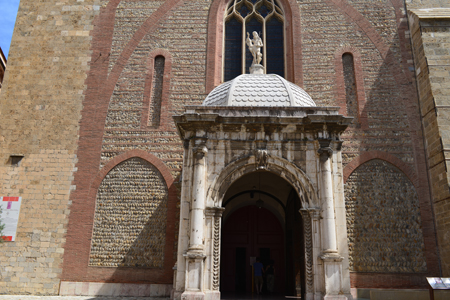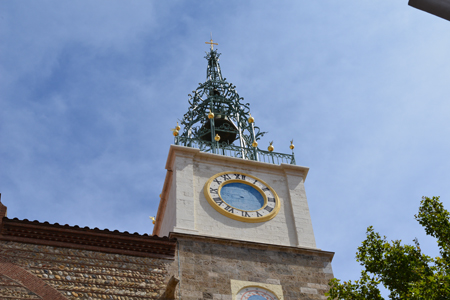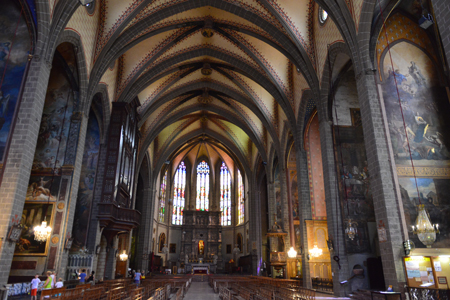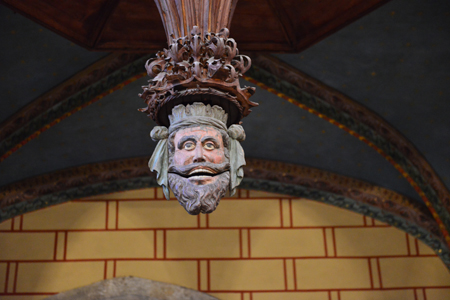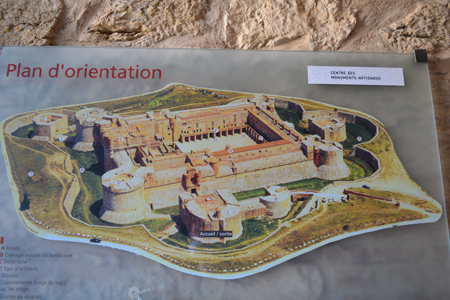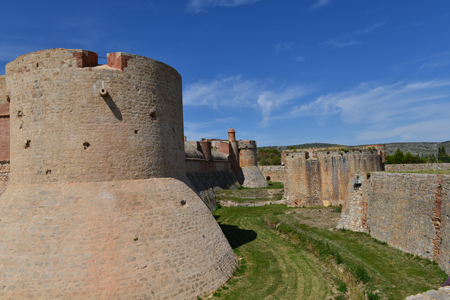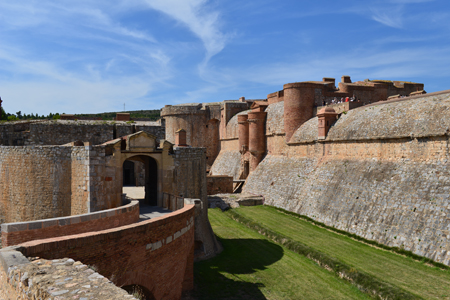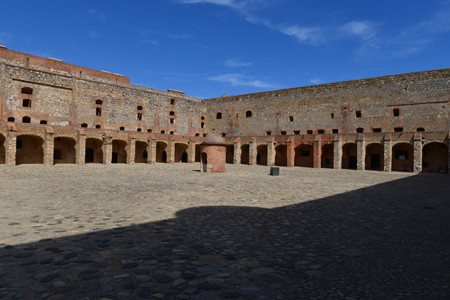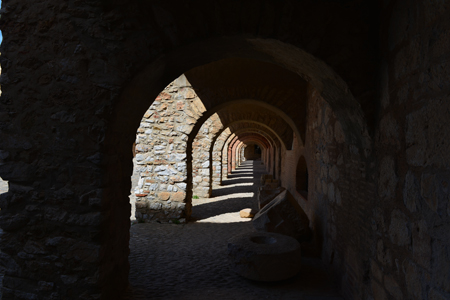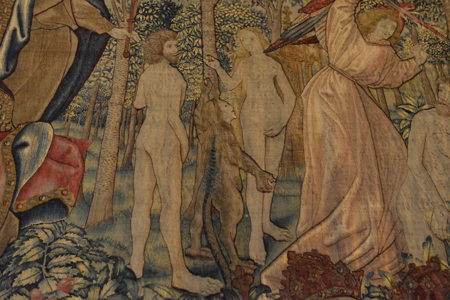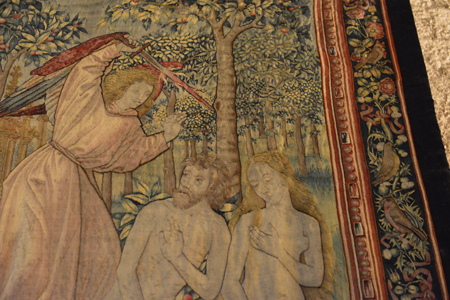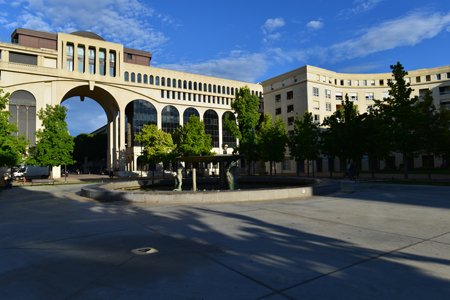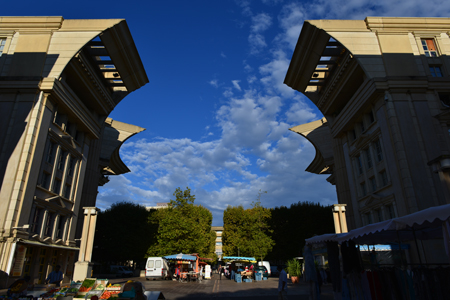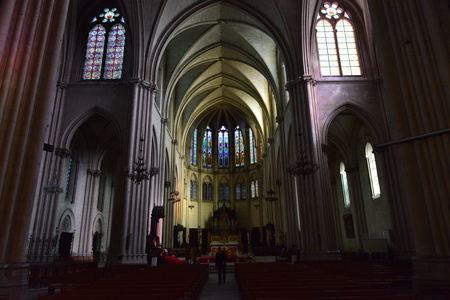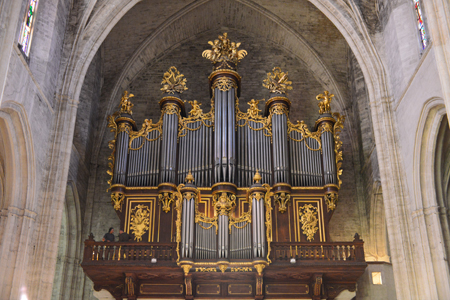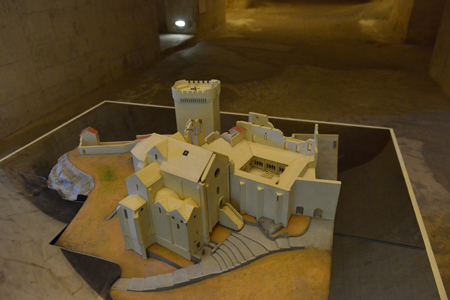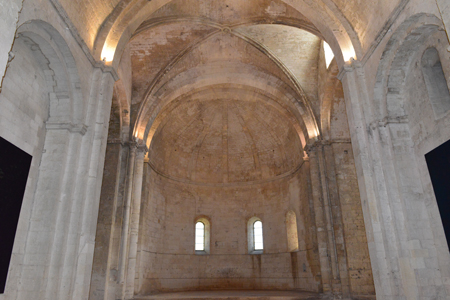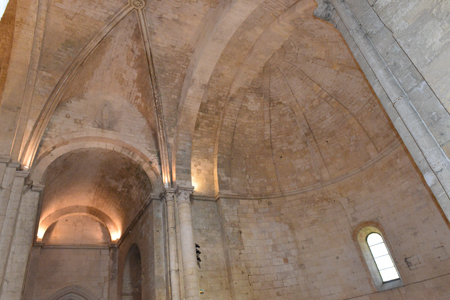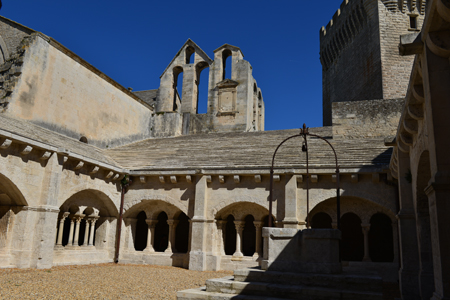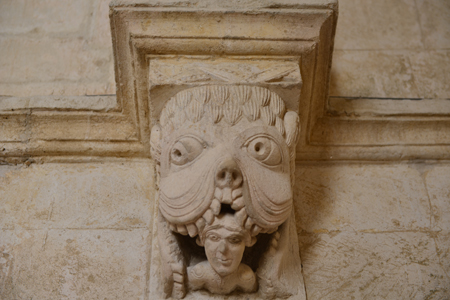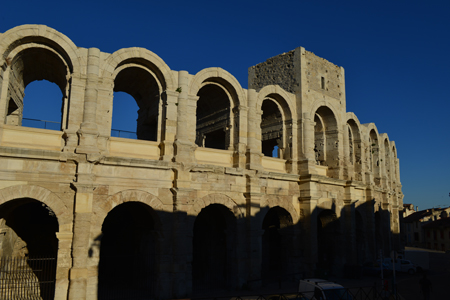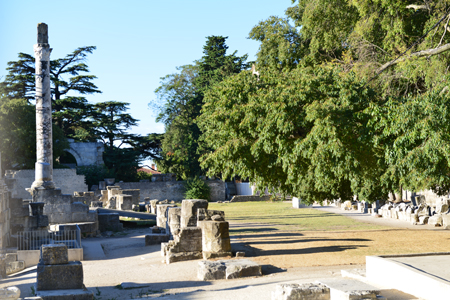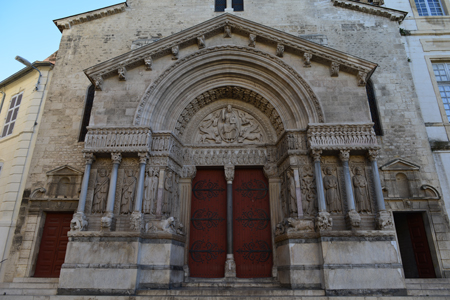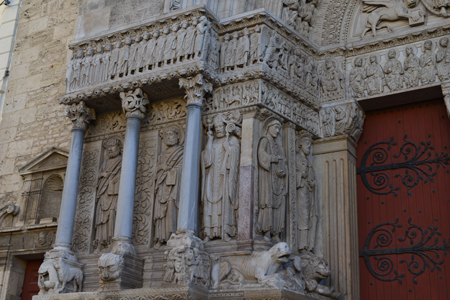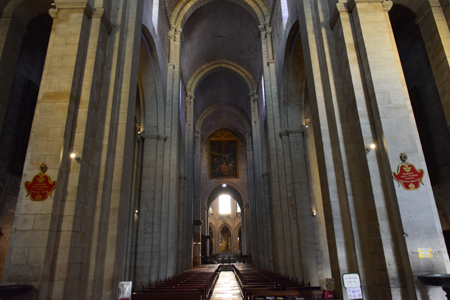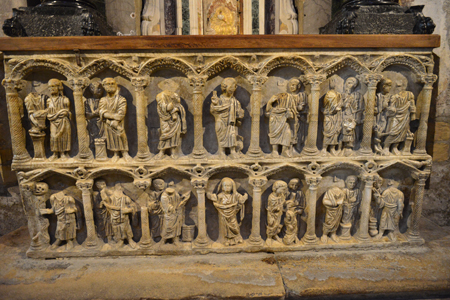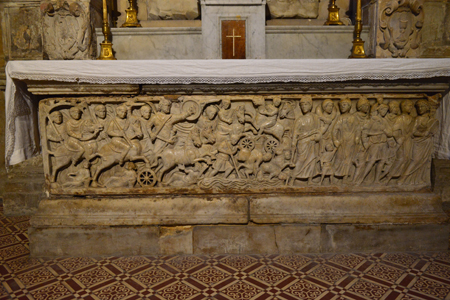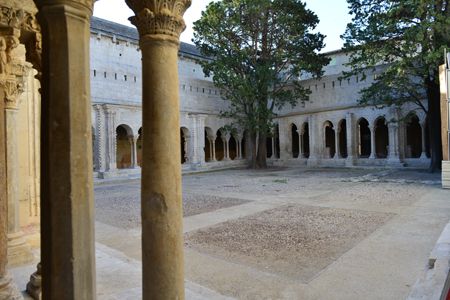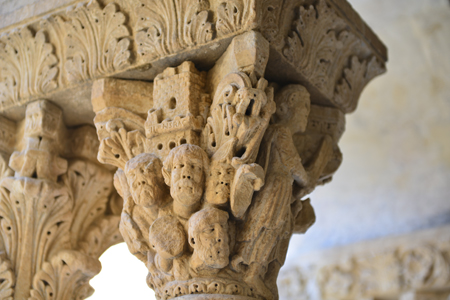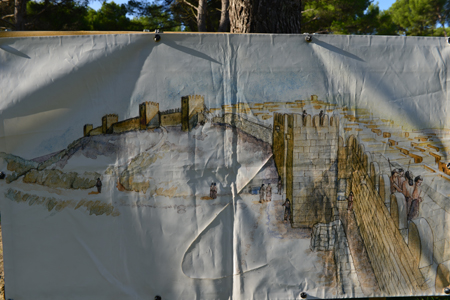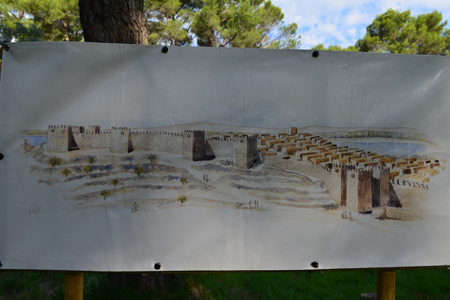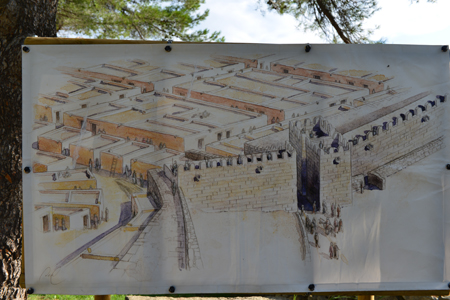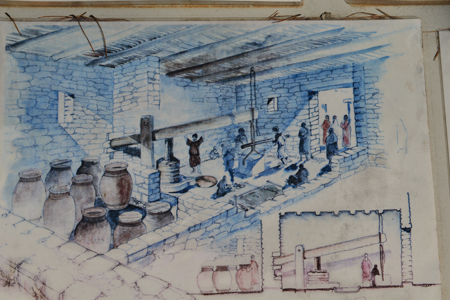Elne
On Monday, August 25 in the morning I
passed to the Weldom store to exchange
the female European plug for a plug
tor the connection on a terminal. My
first halt was in Elne to visit the
church Ste-Eulalie-and-Ste-Julie built
in the 11th century then supplemented
at the 14th-15th centuries. Most
remarkable is the cloister whose
capitals of the columns tell passages
of the genesis.
Perpignan
After lunching I entered Perpignan looking
for a parking lot which I fortuitously
found along the channel at the
intersection the street Courteline at two
steps from the train station of Perpignan,
center of the world according to Salvador
Dali. The tour proposed by the Green Guide
is interesting but alas many monuments
were not accessible, the church St-Jacques
and the museum of modern art closed for
work. I left the city extremely
disappointed.
Castillet
Cathedral St Jean
Fort Salses
A little further the Fort of Salses
accommodated me. Built in 1493 by
Ferdinand the Catholic and Isabelle of
Castile. The governor of the Fort went
in 1642 learning the fall from
Perpignan. Vauban, the impossible to
circumvent one, made carry out
modifications. But the treaty of the
Pyrenees, 1659, definitively fixing
the borders between France and Spain,
the Fort lost its strategic and
military vocation. It finished its
career in the not very glorious
function of prison during the French
Revolution then finally classified
historic building in 1886. I
bivouacked on a rest area at the
entrance of Portel-of-Corbières.
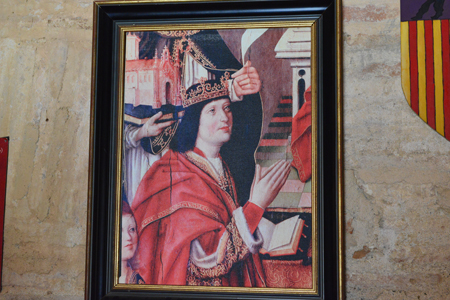 |
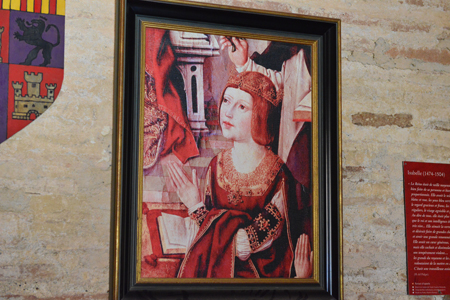 |
| Ferdinand the Catholic |
Isabelle dof Castile |
Narbonne
Palais des Archevêques
The day of August 26th was devoted to
the visit of Narbonne and only to the
Palate of the Archbishops and of its
neighborhoods. Initially at the bottom
of palate I pressed it Via Domitia
which connected the Pass of
Montgenèvre, Briançon, with the Pass
of Banyuls, Port-Vendres. Then I
surveyed the lanes around the
cathedral St-Just and St-Pasteur while
waiting for the opening of the
monuments, 10:00. I dedicated the
majority of my time to the cathedral
and its treasure. I lengthily admired
the Gothic retable discovered in 1981
under a layer of stucco. Of course it
is very damaged by the vicissitudes of
time. The treasure of the cathedral
conceals two remarkable parts, a
carved ivory pot and a box of marriage
in quartz. But the masterpiece is
incontestably the Flemish tapestry of
the 15th century recalling creation.
It is woven in gold wires and of silk.
I give an overall photograph of the
right corner with details to try to
show the smoothness of weaving. After
these cultural foods I lunched at the
Table St-Crescent of inventive and
succulent meets. I moved then towards
Montpellier where I bivouacked like on
July 22nd at Mauguio to visit the
city.
 |
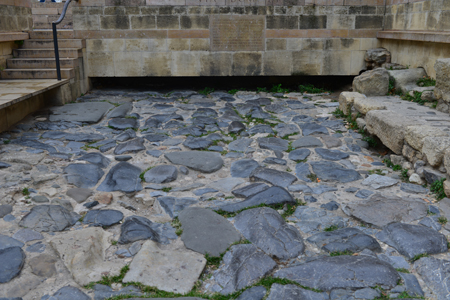 |
| Via Domitia |
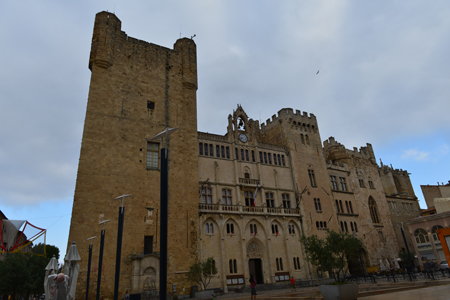 |
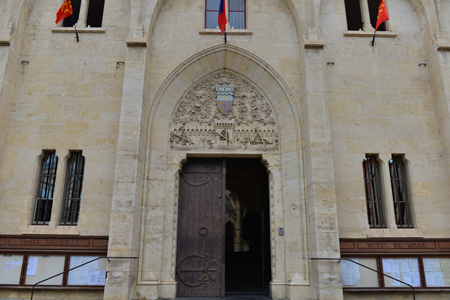 |
| Palais des Archevêques |
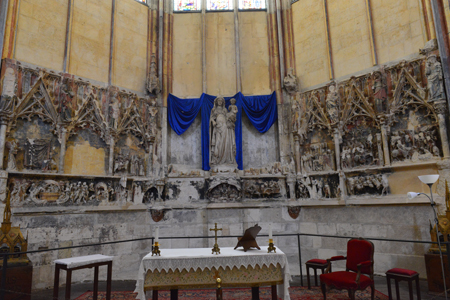 |
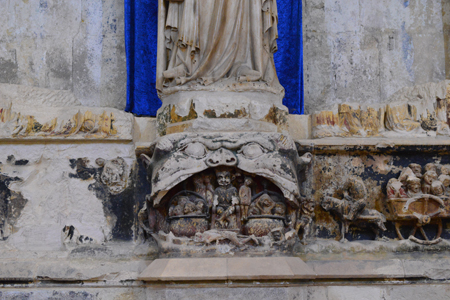 |
| Grand retable gothique, 1354/1381 |
Gueule béante du Léviathan |
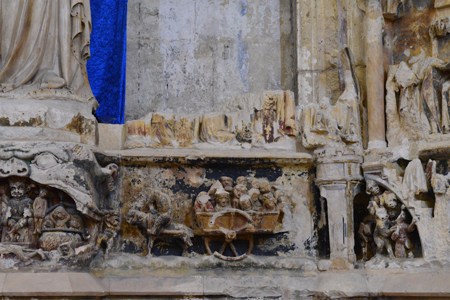 |
 |
| Les damnés conduits en charrette en enfer |
Les élus montant l'escalier au royaume céleste |
 |
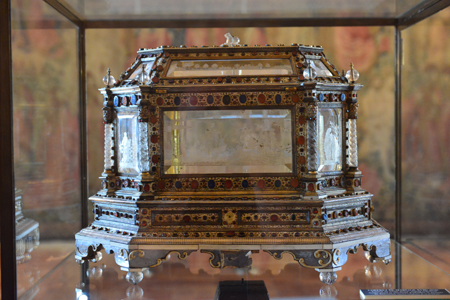 |
| Ivoire sculpté, 10e siècle |
Coffret de mariage en cristal de roche |
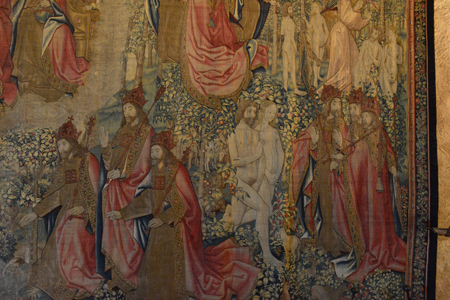 |
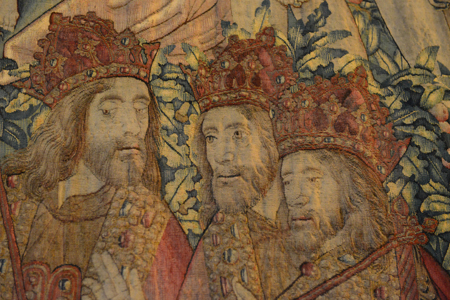 |
| Tapisserie
flamande représentant la Création,
15e siècle |
Montpellier
Quartier Antigone
I left my truck on the carpark of
Auchan at the Park Exposition station
of the Tram, 22 minutes later I were
at the Antigone District conceived by
the architect Ricardo Bofill using the
technique of the prestressed concrete.
BOF! I am not enthusiastic.
Round the square of la Comédie
Still 20 minutes of course on foot and
I lead to the place of the Comedy
which at this early hour is still
virgin of tourist and the sky still
black of the night rain. While waiting
for the opening of the museums I
strolled on the tour proposed by the
Green Guide book walking on in the
small streets bordered of old private
mansions of 17th and 18th century. I
stopped at greater length with the
cathedral St-Pierre which resembles
more one fortress than a church with
its two towers surrounding the gate.
It is of Gothic style without anything
in particulars. Contiguous the medical
college, very famous as in the Middle
Ages was closed to the visit. In 1688
the council of the city decided to
create a park, the Promenade de Peyrou,
to accommodate a monumental of Louis
XIV who arrived only in 1718! I
finished the visit of Montpellier by
the Fabre museum exposing collections
of the various schools of Europe.
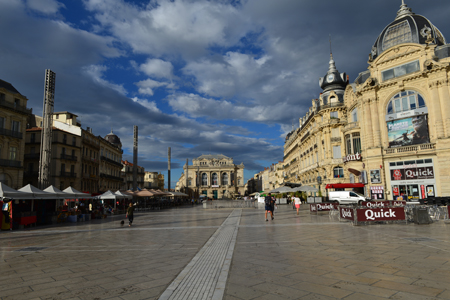 |
| Place de la Comédie |
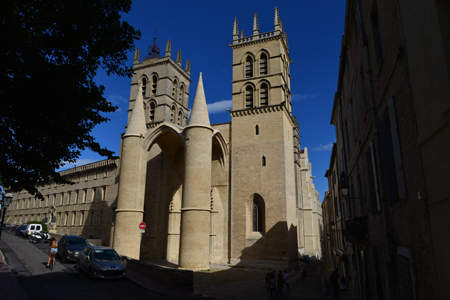 |
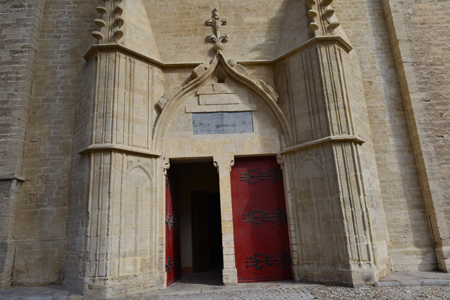 |
| Cathédrale St-Pierre |
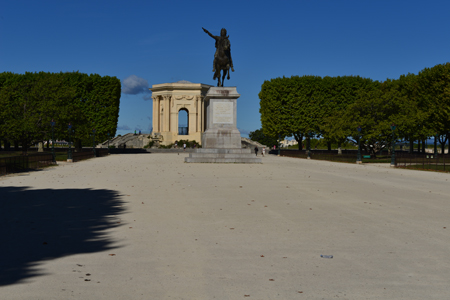 |
 |
| Promenade du Peyrou |
Musée Fabre
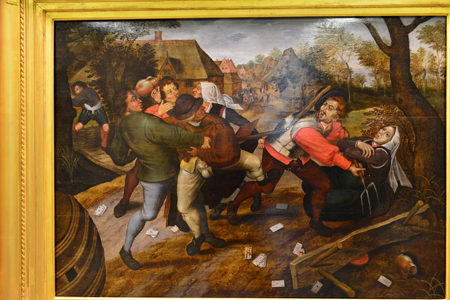 |
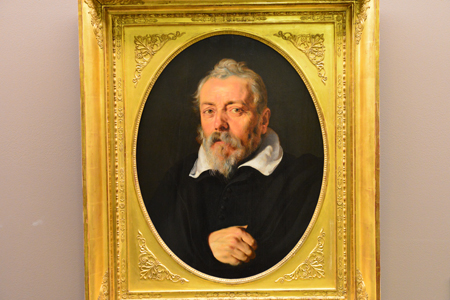 |
| Rixe de paysans by Breughel |
Portrait by Rubens |
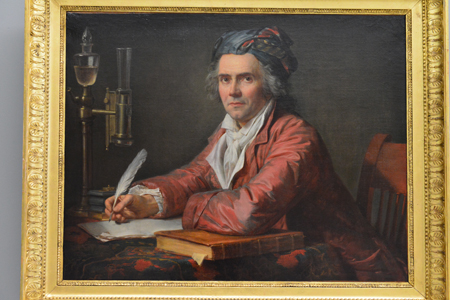 |
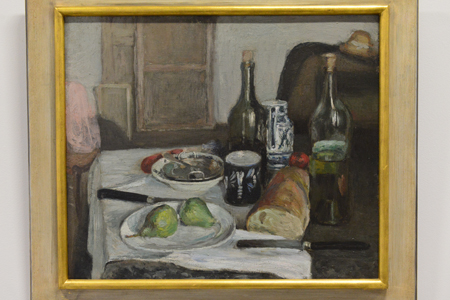 |
| Portrait by David |
Nature morte by Matisse |
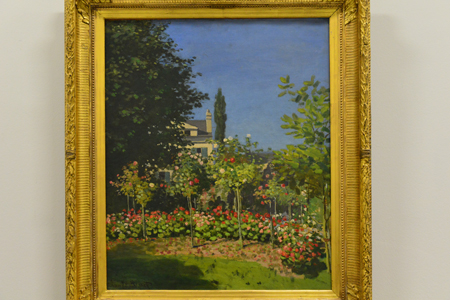 |
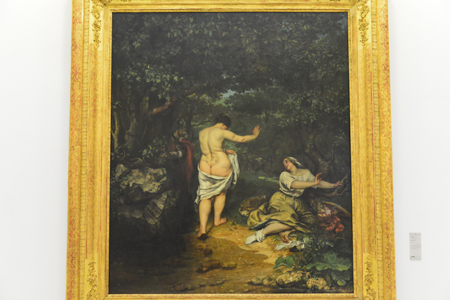 |
| Le jardin en fleurs à Ste-Adresse by Monet |
Les baigneuses by Courbet |
Abbaye de Montmajour
At the beginning of afternoon I moved
towards Arles which I reached at about
15:30. Alas the parking was impossible
mission. I was thus going to visit the
Montmajour Abbey with the intention to
bivouac there. It is the most
extraordinary ruin that it was given me to
see during my Pyrenean trip. The crypt
under the abbey church is built on the
rock. The nave was completed in 1153. The
cloister was several times altered during
posterior centuries. Finally the monastery
Saint-Maur was built in 1703. Tomorrow
will be another day to try to visit Arles
Arles
Les Arènes et le
Théâtre antique
Arles, early morning I returned to the
city looking for a parking lot which I
found in a small street behind the
carpark of the center, out of silo.
The monumental center is concentrated
behind the vestiges of the ramparts in
a maze of lanes around old private
mansions of 17th and 18th century.
While strolling I imagined what could
be the life at that time, the such
very famous, congestion of the Paris
streets, noise of horses, bearing of
fit with body, cries of rank and file
etc. I vainly looked for the best
viewing angle of the arenas and the
ancient theater, there too impossible
mission, primarily due to
embarrassment of modern times, erratic
parking of cars and terraces of
restaurants.
Eglise Saint-Trophisme
The museums open very late, so much worse,
I threw my reserved on the church Saint-Trophism
whose Romanesque gate is a masterpiece
registered at the world heritage of
UNESCO. The interior is characterized by a
nave and collateral the very narrow. Two
vaults conceal each one a sarcophagus as
an altar telling of the passages of the
bible. The cloister is one of most elegant
inf Provence with sculptures, certainly
very damaged, which came from the workshop
of Saint-Gilles. In the afternoon I found
refuge at Saint-Blaise of which I would
visit the archeological site tomorrow at
the forefront of day.
Site archéologique de Saint-Blaise
The weather power station of my truck
announced rain; I undertook the visit
of the archeological site as of the
opening under a timid sun. The site
was invented in 1935 by Henri Roland
who spent 35 years of his life to
excavate the ground to release it from
the vegetation. Saint-Blaise was a
Gallic oppidum whose history attested
by the excavations can be told in
three periods. The antiquated period
in 6th and 5th century BC saw hatching
a habitat sheltered by a wall and
developing the trade with the
Mediterranean basin. Then the site was
abandoned. The second Hellenistic
period in 2nd century BC developed
after the construction of a wall in
big apparatus. But the competitions in
particular with the city of Marseilles
involved the call by the latter of the
reinforcements of Rome whose troops
destroyed the Gallic oppidum with blow
of catapulted balls. The third early
Christian period started at 5th
century AD under the aegis of Arles
and was again strengthened. Texts
reveal the name of it, Ugium whose
activity was related to the trade of
the salt extracted from the ponds. Two
churches were built and of the
rupestral tombs dug outside the
ramparts for the wisigothic period,
5th-6th century. The rain fell around
11:30 I took refuge in my truck before
my return to Trans-en-Provence via
Martigues PSI.
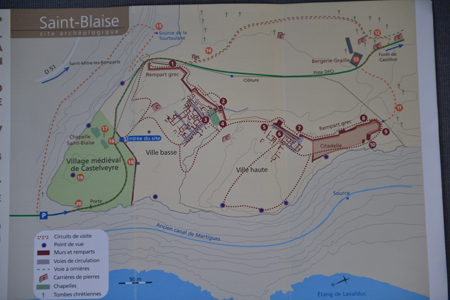 |
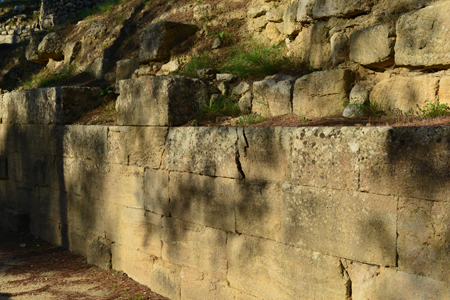 |
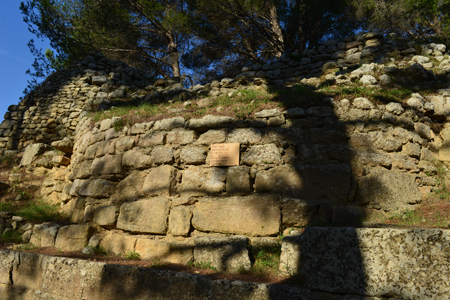 |
| Enceinte en grand appareil type grec, 2e siècle BC |
Tour gauloise, 2e siècle BC |
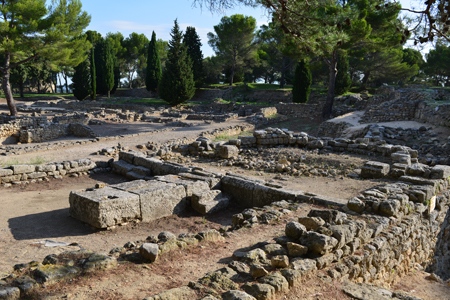 |
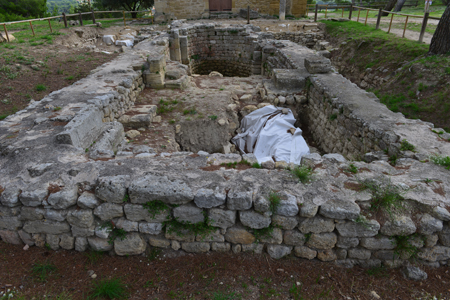 |
| St-Pierre d'Ugium, 5e-8e siècle |
St-Vincent d'Ugium, 5e-8e siècle |
 |
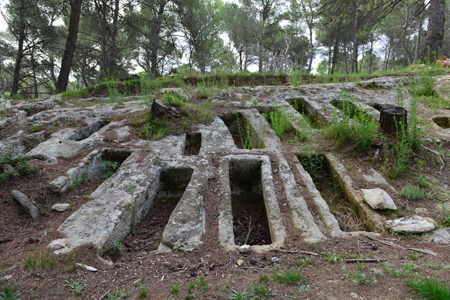 |
| Puits-citerne |
Tombes rupestres
paléochrétienne |
Restitution par Jean-Marie Gassend, 1977
